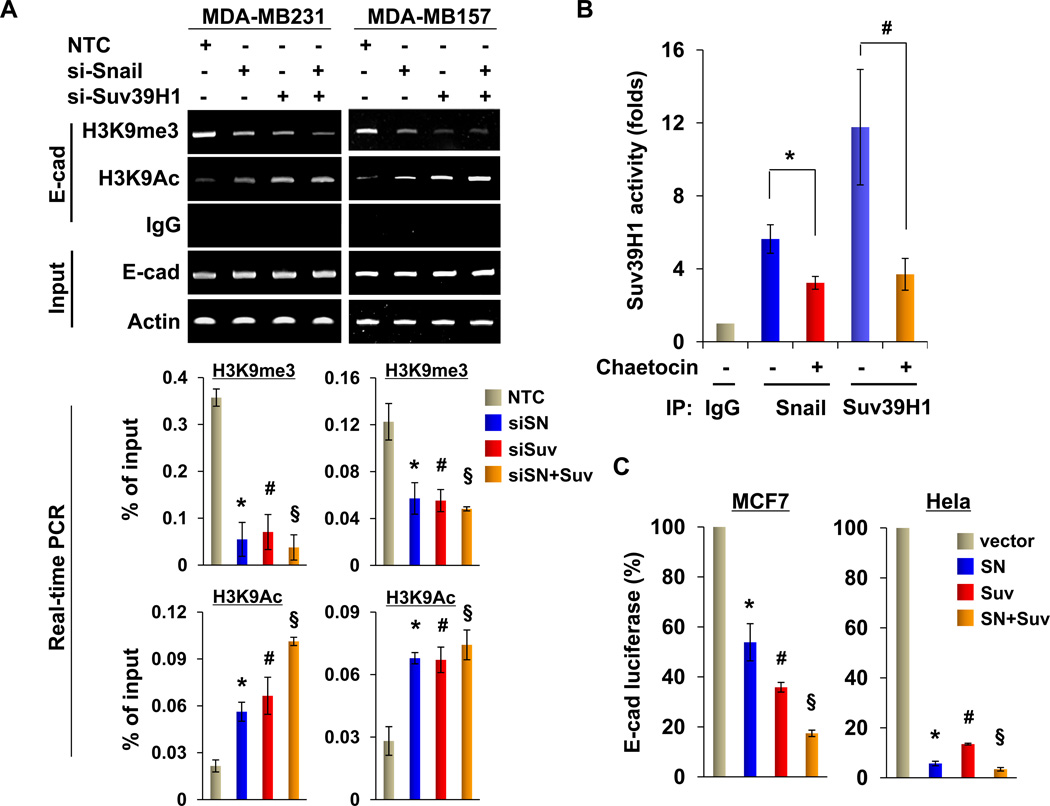Figure 6.
Suv39H1 is recruited to the E-cadherin promoter for epigenetic silencing of E-cadherin expression. (A) Snail, Suv39H1 or non-target control (NTC) siRNA was expressed in MDA-MB157 and MDA-MB231 cells, and H3K9me3 and H3K9 acetylation at the E-cadherin promoter was analyzed by the ChIP assay (top panel). Quantitative real-time PCR was also performed to analyze ChIP samples above and results are presented in the bottom panels (mean ± SD from three separate experiments). *, # and § P < 0.01 for MDA-MB231 or MDA-MB157 cells transfected with NTC compared with cells with knockdown of Snail, Suv39H1 or both expression. (B) An in vitro Suv39H1 methylation assay was carried out as described in the Materials and Methods section. Statistical analysis of the methyltransferase activity, from three independent experiments, is shown in the bar graph. *P < 0.05 for treatment with or without Chaetocin in immunoprecipitation sample using Snail antibody. #P < 0.01 for treatment with or without Chaetocin in immunoprecipitation sample using Suv39H1 antibody. (C) Snail, Suv39H1 or both were co-expressed with the E-cadherin promoter luciferase construct in MCF7 and HeLa cells. After 48 h, luciferase activities were normalized and determined (mean ± SD in three separate experiments). *, # and § P < 0.01 for MCF7 or Hela cells transfected with vector compared with corresponding cells with Snail, Suv39H1 or both expression.

